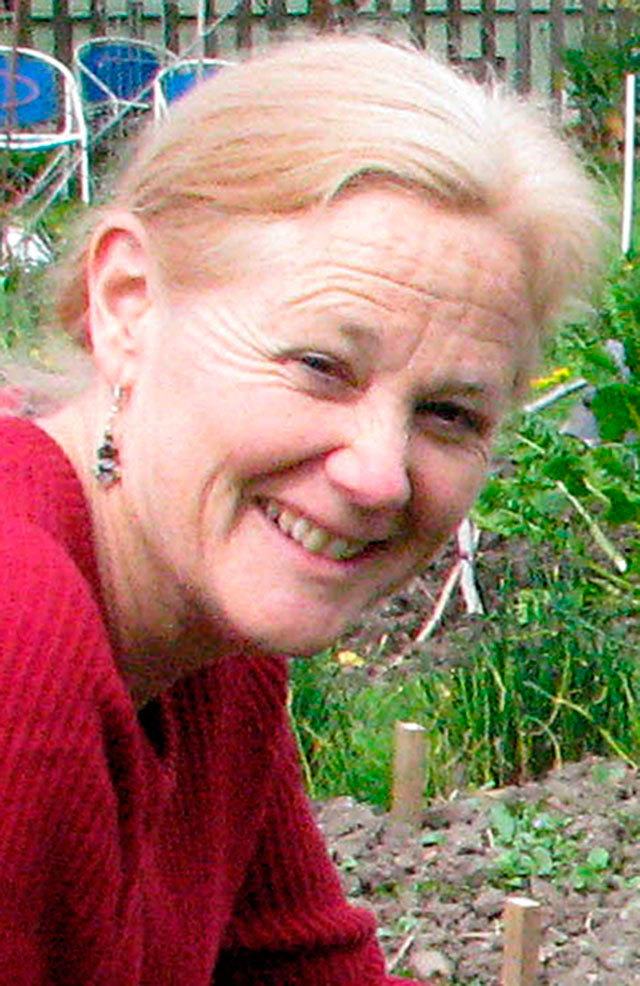PORT ANGELES — Clallam County commissioners will take a few weeks to digest voluminous public testimony before voting on a controversial plan to eradicate noxious weeds.
The board is considering an ordinance that would allow spot spraying of herbicides as one of several methods to control invasive plants such as tansy ragwort, poison hemlock, butterfly bush, knotweed and scotch broom.
“Noxious weeds know no boundaries, and the state law requires control,” Clallam County Noxious Weed Coordinator Cathy Lucero said in a public hearing Tuesday.
“The county has not been able to achieve compliance. This ordinance commits the county to a strategic plan to achieve their legal responsibilities and to do better, to have a stewardship goal.”
Commissioners took nearly three hours of testimony before ending the hearing to join a scheduled Board of Health meeting in the same room.
About two-thirds of the speakers who took a position on the ordinance creating an “Integrated Weed Management” chapter in the county code favored it.
Others raised significant environmental and health concerns about even limited spraying of herbicides such as Roundup.
“I appreciate all of the input today,” Commissioner Mark Ozias said.
“I’ve taken several pages of extensive notes and look forward to working further with Kathy and with the public to try and address some of the concerns and ideas that have come forward today.”
“Same here,” Commissioner Bill Peach said.
“I picked up on some things that I wasn’t aware of. I do want to do some reading about it, and I think it will take a couple of weeks.”
Chairman Mike Chapman suggested that the board “digest all the information” and schedule a follow-up work session to discuss the next steps, which might include an independent review of the proposal.
Chapman noted that the public can still comment on the proposal.
“It’s a legislative matter,” Chapman said. “You can email. You call commissioners. You can talk to us individually.”
The weed management plan would promote native vegetation and aim to remove harmful plants through the use of mechanical, biological, cultural, chemical and preventative controls, according to the proposal.
If approved, property owners who do not want herbicides sprayed on roadsides near their property could enter into an annual agreement with the county to take specific measures to “ensure the timely and effective control and reduction of target weed species,” the proposal states.
The county Road Department has traditionally mowed noxious weeds along the 1,050 acres of county road right-of-way.
Mowing has been shown to spread noxious weeds, and certain invasive plants such as tansy ragwort respond to mowing by growing lower, sprouting more stems and blooming more profusely than they otherwise would, Lucero said.
Herbicides, which are used sparingly by neighboring jurisdictions, are not permitted along Clallam County roads.
“We focus on the county roads because this is where the most of the noxious weed problem is found,” Lucero said.
“To successfully combat the invasives, all tools have to be on the table but deployed in tandem. There’s not one solution that fits all.”
Before the first of about three dozens speakers took to the podium, Ozias said he was not prepared to vote on the proposal Tuesday.
“We all realize that what we’re talking about here is a challenging, contentious and for many of us, including myself, a highly personal issue,” Ozias said.
“And what we’re talking about is a significant change in county policy. For those reasons, we have worked to engage in an extensive and thorough public outreach process.”
While recognizing the “deep, personal concerns” that many residents have about herbicides, Ozias noted that experts such as a federal vegetation manager and watershed ecologist are strong supporters of the plan.
“One thing that I have come to understand is most professionals who have made a career of studying invasive and noxious weeds are supportive of the approach that is presented in this plan,” Ozias said.
“Because this is a complex issue, because it’s so personal, we are working hard to find the best path forward.”
In response to several emails he had received prior to the hearing, Ozias attempted to clear up misconceptions about the proposal.
One misconceptions, he said, was that the plan would expand the area in which herbicides could be applied.
“Right now, roadsides are the only area in the county where herbicides are not allowed to be used,” Ozias said.
“So citizens don’t have any way of knowing, really, what’s happening in county parks, what’s happening in other county-owned land, like along the [Dungeness River] dike, etcetera.
“There’s no plan in place,” Ozias added. “There’s no written review. There’s no way for folks to know what’s going on.”
The weed management plan incorporates all county lands “so that citizens have the opportunity at the beginning of each year to understand exactly when and where noxious weed infestations are, when and where there is the intention, or the possibility, of using herbicide to combat those.”
“Our goal is to shed much more light on what’s happening, and to avoid the confusion that often happens now,” Ozias said.
Speaking on behalf of the Olympic Environmental Council, Darlene Schanfald of Port Angeles presented the board with about 100 signatures from people who were “disgusted” by what she descried as a “poison plan.”
“You’re elected to protect our health,” Schanfald told commissioners.
“Herbicide usage impinges on our health, and on nature as well. Reintroducing pesticides along the right of ways and using it elsewhere is walking us back in time.”
Other speakers noted that pesticides would not be permitted under the proposal.
“The naysayers paint a scenario of giant trucks canvassing neighborhoods filled with deadly chemicals releasing stormclouds of death,” said Shelley Taylor of Sequim.
“They cherry-pick facts to paint this option with a brush of worst-case scenario. It’s a common tactic, but fear mongering is not a solution.”
________
Reporter Rob Ollikainen can be reached at 360-452-2345, ext. 56450, or at rollikainen@peninsuladailynews.com.

